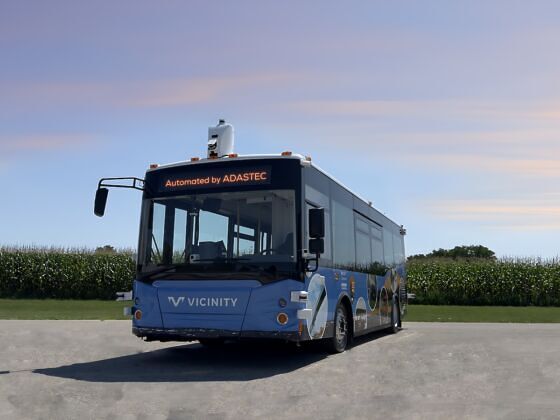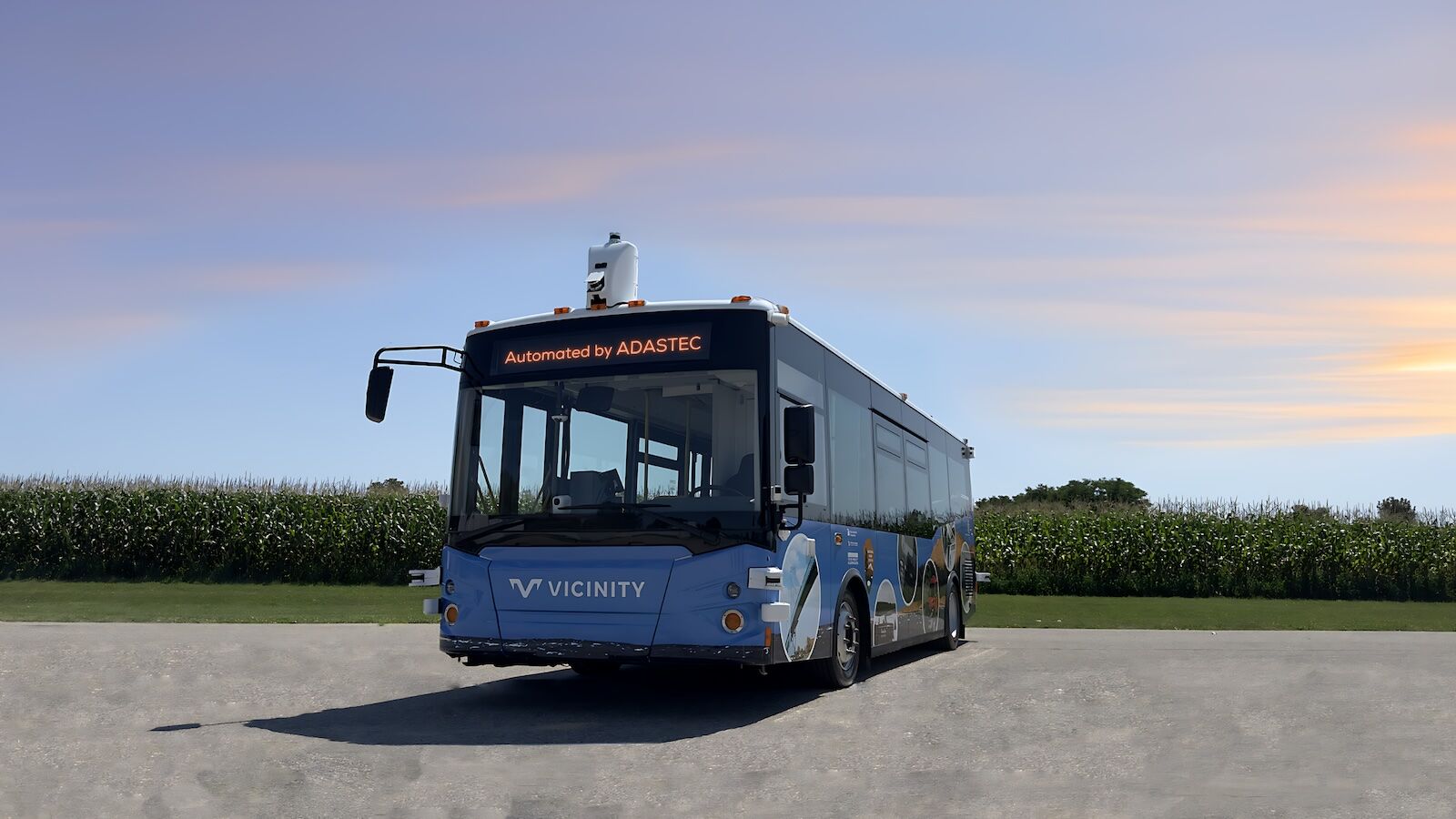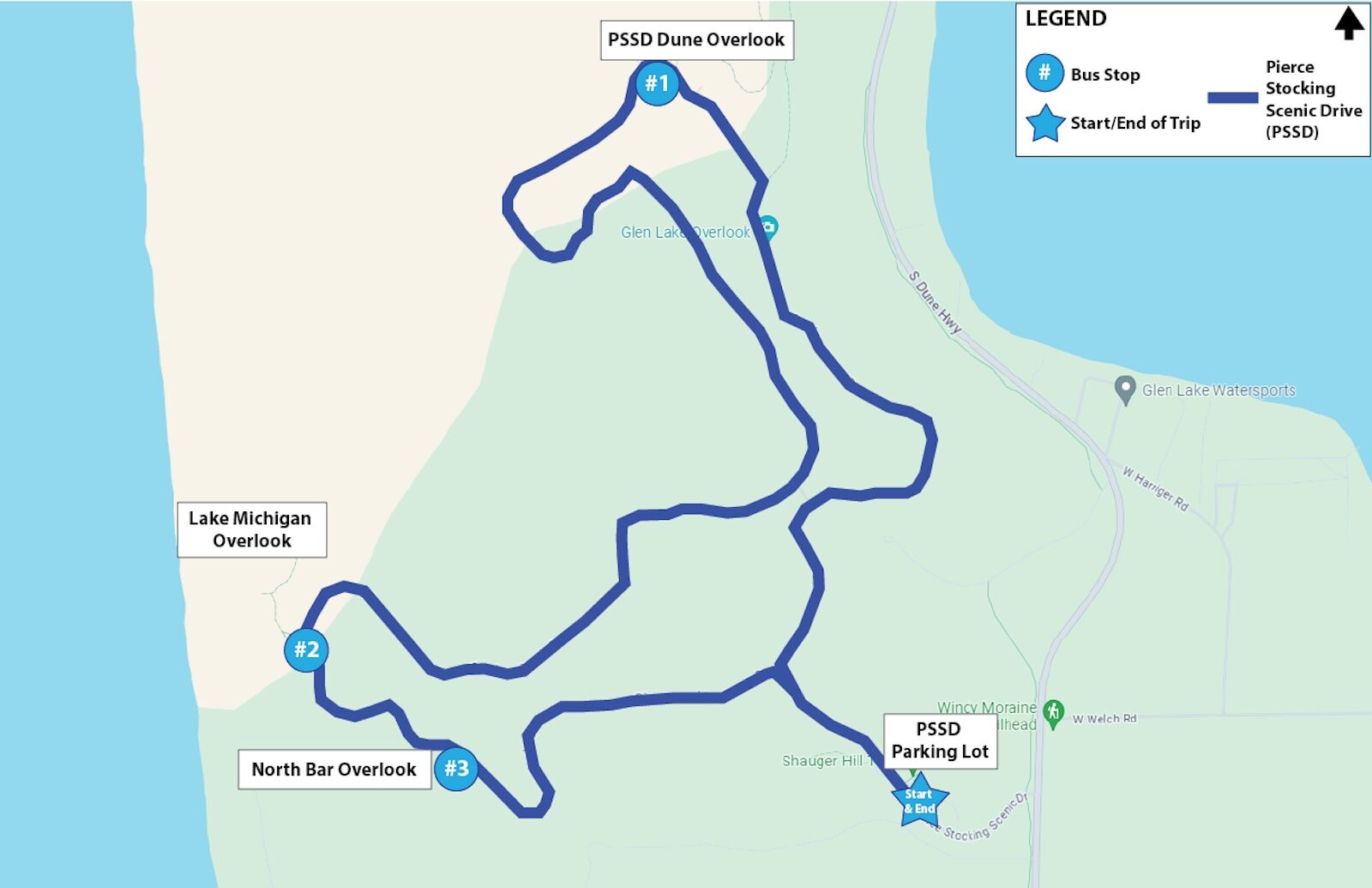A national park service site in northern Michigan is offering a glimpse at the future of public transit. Through early October, you can ride an autonomous electric bus to popular sites at Sleeping Bear Dunes National Lakeshore. Adastec, a company specializing in autonomous vehicle technology for commercial purposes, is testing autonomous shuttling for park guests in a first-of-its-kind concept for the National Park Service. Guests can register in advance to take part in an experience that, if successful, could set the bar for mass transit in other crowded park service sites.


You Can Now Ride an Autonomous Electric Bus Through Sleeping Dunes National Lakeshore
The project, a test run stretching from mid-August to early October, shuttles visitors from the Pierce Stocking Scenic Drive (PSSD) parking lot to three popular overlooks and back to the parking lot in two-hour increments. The stops include North Bar Overlook, Lake Michigan Overlook, and the PSSD Dune Overlook. Tours last two hours, and guests should plan to commit to the entire tour – the bus will park and wait for a designated amount of time at each stop before moving on to the next one. Miss the bus, and you could be stuck for a while.
“Michigan and the National Park Service are studying how the next generation of automated bus technology performs in an outdoor recreational setting, and if automated, electric transit buses have the potential to improve safety, the visitor experience, and environmental sustainability,” Adastec says on its website. “This pilot will evaluate the potential for larger-scale deployments in other recreational or public transit settings.”
How does the Adastec autonomous electric bus work?

Photo courtesy Adastec
The Adastec autonomous electric bus used in the pilot at Sleeping Bear Dunes National Lakeshore is quipped with LiDAR sensors to help it comprehend what’s happening around it, as well as cameras, radar, and ultrasonic sensors. The bus constantly scans its environment and makes split-second decisions. This understandably sounds a bit sketch for riders who haven’t ridden in an autonomous vehicle before. However, as data is compiled through increased use, statistics are beginning to show that autonomous vehicles are actually safer than human drivers in many common driving situations. That’s because the vehicles constantly process and react to data in the moment and the “human factor” is eliminated. Every decision is based purely on data and sensors, with factors like emotion and distractions not impacting the “driver.”
The collected data is processed by the autonomous driving system, flowride.ai, which makes real-time decisions about steering, acceleration, braking, and navigation. Powered by electric motors for efficient and clean propulsion, the bus utilizes artificial intelligence to learn from its experiences and improve its performance over time.
Why is the Automated Bus Pilot at Sleeping Bear Dunes important?

Map courtesy Adastec
Two critical aspects speak to the importance of this test pilot. First is that these buses are electric. Bus service already shuttles passengers through some busy national parks and sites operated by the NPS, including Zion National Park and Rocky Mountain National Park. These buses, while certainly a greener and more manageable option than having all of the passengers drive personal vehicles through the park, are powered by internal combustion engines, and therefore pollute the parks as they move guests through them. By providing busses that aren’t spewing carbon dioxide into the air, the NPS can ensure a healthier environment for guests while also cutting costs.
Cost-cutting is another notable aspect of the autonomous electric buses. There’s no driver, and although this pilot is monitored in real time by Adastec, as the technology improves it’s possible that this or other autonomous transportation services could help the NPS direct labor resources to other aspects of the park experience such as maintenance, crowd control, guided trail outings, and more. The concept is similar to how autonomous rideshare services like Waymo are revolutionizing private transit.
The project was funded by the Michigan Office of Future Mobility and Electrification’s National Parks Michigan Mobility Challenge, a project from the National Park Service and the Michigan Department of Transportation. The technology used for the pilot is part of Adastec’s flowride.ai concept. A staff member from Adastec will be onboard the bus at all times, and can jump behind the wheel just in case something goes wrong. Visit the ride booking page to schedule your tour if you plan to be in the area over the coming month.